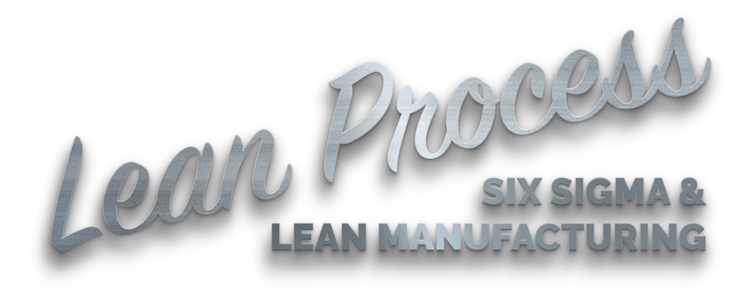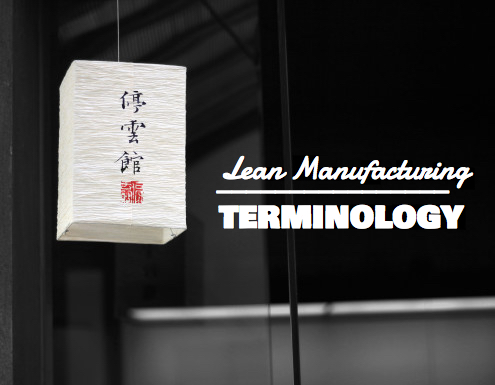
What is 6 Sigma?
There are a number of different definitions of the term 6 Sigma. A study of the literature on the subject shows that some authors focus on 6 Sigma as a quality metric whereas others define it as a business management philosophy. Below are some examples:
Six Sigma has evolved to become very much an all-encompassing management tool for change and customer quality.
Six Sigma: SPC and TQM in Manufacturing and Services
Six Sigma: A comprehensive and flexible system for achieving, sustaining and maximising business success. Six Sigma is uniquely driven by close understanding of customer needs, disciplined use of facts, data, and statistical analysis, and diligent attention to managing, improving, and reinventing business processes.
The Six Sigma Way: How GE, Motorola, and Other Top Companies are Honing Their Performance
Six Sigma implies 3.4 defects or mistakes or errors or failures per million opportunities. Here Sigma is a term used to represent the variation about the average of a process. The focus of ‘Six Sigma’ is not on counting the defects in processes, but the number of opportunities within a process that could result in defects.
World Class Applications of Six Sigma: Real World Examples of Success
A disciplined method of using extremely rigorous data gathering and statistical analysis to pinpoint sources of errors and ways of eliminating them.
Six SIGMA: The Breakthrough Management Strategy Revolutionizing the World’s Top Corporations
Fundamentally, 6 Sigma is a vehicle that allows a company to focus on their customers and to create competitive advantage through consistently reliable products. Originally it was simply a measure of quality, but since its creation over twenty years ago it has evolved into a business management philosophy. Drawing upon various subjects such as statistics, change management, project management and team-working, 6 sigma provides a disciplined, data-driven methodology of eliminating variation from processes.
What is 6 Sigma - The Metric
6 Sigma & Standard Deviation
In a perfect world, all the components to come off a production line would be absolutely identical and the variation in a particular characteristic (length etc.) would, therefore, be zero. However, in the real world, variation is inevitable and, therefore, the aim of 6 Sigma is to reduce it as much as possible. In a process with a large amount of variation, the standard deviation (represented by the Greek letter sigma) is high. In statistical terms, that means that the data in a population is widely dispersed about the arithmetic mean.
6 Sigma is a target used in quality. It refers to a process in which six standard deviations fit between the target value and the customer’s specified limits (LSL & USL) as shown on the left-hand side of the diagram below. In order for six standard deviations to fit, the standard deviation itself has to be smaller than if say three sigma (right-hand side of the diagram) was the quality goal.
Note that although it may appear that the entire process distribution is contained within the specification limits, this is not the case and is merely due to the constraints of the graphics package used. The distribution is positive for all values (-∞, ∞).
Essentially, the higher the sigma value the less likely it is for a defect to occur, because more of the process distribution is contained within the specification.
~ BENDELL, T. (2000)
This begins to explain the buzz surrounding six sigma. A typical process in a business would perform at a level between three and four sigma (according to World Class Applications of Six Sigma: Real World Examples of Success). A company achieving 6 sigma levels of performance will, therefore, have a significant competitive advantage.
Assuming that the statistical population is normally distributed, a 6 sigma process will produce a yield of 99.9999998%. In other words, out of every billion components produced, only two would be defective. Whereas, a 3 sigma process would produce a yield of 99.73% which equates to 2700 defects per million opportunities (DPMO). In 6 Sigma, the term defect is used to describe a value that falls outside the customers’ specification limits. An opportunity is defined as the chance of a defect occurring.
The 1.5 Sigma Shift
So far the values considered are defined as short-term capabilities - they do not represent what would happen over the long term. Motorola determined from years of data collection that processes drift over time. They called it the long term dynamic mean variation. Although it tends to vary between 1.4 and 1.6 standard deviations, the convention in 6 Sigma is to use the value of 1.5 to adjust sigma scores.
So why do processes drift over time? One way to answer this question is to consider a 6 Sigma project. Immediately after it has been implemented, the sigma level can be calculated but it will only be relevant to the short term. The reason for this is that the data collection during the project is likely to have occurred over a very short period of time and, therefore, the experience base is limited. This means that the data will only account for what is known as common cause variation, that is, the variation that is predictable probabilistically. However, over the long term, it is likely that variation will occur outside of the historical experience base. This variation is completely unpredictable and is commonly known as assignable or special cause variation. Considering a CNC machining process as an example, common cause variation could be due to normal wear and tear of the tool whereas a power surge or computer crash would be an assignable cause. Because short-term data does not contain this special cause variation, it is likely to show less variation, indicating better performance. This difference is the 1.5 sigma shift.
In Six SIGMA: The Breakthrough Management Strategy Revolutionizing the World’s Top Corporations (2000), Harry & Schroeder write:
By offsetting Normal distribution by a 1.5 standard deviation on either side, the adjustment takes into account what happens to every process over many cycles of manufacturing… Simply put, accommodating shift and drift is our ‘fudge factor,’ or a way to allow for unexpected errors or movement over time. Using 1.5 sigma as a standard deviation gives us a strong advantage in improving quality not only in industrial process and designs, but in commercial processes as well. It allows us to design products and services that are relatively impervious, or ‘robust,’ to natural, unavoidable sources of variation in processes, components, and materials.
The reporting convention of 6 Sigma is to use the long-term value, as this is what the customer experiences. Taking this long-term drift into account means that a performance level of 6 Sigma now only yields 99.9997% or 3.4 DPMO. The next diagram shows the distribution curve for a 6 Sigma process. The blue curves are shifted by ±1.5 sigma and, therefore, more of the distribution falls outside the specification limits.
The following table compares processes performing at different sigma levels:
The next graph shows the distribution curves for processes performing at different sigma levels:
The advantages of achieving 6 Sigma seem rather intuitive: reduced cycle times, lower costs and increased customer satisfaction. Six sigma is widely regarded as a world-class level of performance and only a few companies have mastered the success factors required to achieve it.
What is 6 Sigma - A Business Process Improvement Methodology
Structured Application of Quality Tools
One of the main criticisms of 6 Sigma is the fact that it is merely a fashionable new repackaging of old concepts:
“Six Sigma presents absolutely nothing new to the quality field of defect prevention.”
~ STAMATIS, D. H. (2000)
“Is there anything really new about the tools and methods of six sigma? No, the basic statistical tools such as experimental design and control charts have been around for years.”
~ VINING, G. G. (2003)
However, advocates of the methodology are eager to defend these claims:
Some technical, but non-statistical topics are included, such as quality function deployment (QFD) and failure modes and effects analysis (FMEA). Thus, Six Sigma tends to combine traditional statistical tools with tools from other disciplines, such as engineering design (FMEA), organisational effectiveness, problem solving (mistake proofing, multi-vari), or quality improvement (QFD).
~ HOERL, R. (2001)
Although Six Sigma’s tools and methods include many of the statistical tools that were employed in other quality movements, here they’re employed in a systematic project-oriented fashion through the define, measure, analyse, improve and control (DMAIC) cycle.
~ RAMBERG, J. S. (2000)
Six Sigma relies on tried and true methods that have been around for decades. In fact, Six Sigma discards a great deal of the complexity that characterized Total Quality Management (TQM).
~ PYZDEK, T. (2000)
What is new about 6 Sigma, therefore, is the structured application of tools in the DMAIC problem-solving methodology.
There are many models which can be used to improve a process or solve a problem, many of which are based on the work of Shewhart. His PDCA cycle consisted of four steps, Plan-Do-Check-Act. Deming improved upon this with his PDSA cycle, Plan-Do-Study-Act. DMAIC is a further progression of the cycle.
The DMAIC Cycle
Once a company has identified an opportunity that requires improvement by a 6 Sigma project, the DMAIC cycle begins. For more information on the application of the DMAIC process check out this post.
In summary, we can see that 6 Sigma is a structured application of statistical and quality control tools, many of which are derived from earlier quality management strategies, in the DMAIC process.
References
- BENDELL, T. (2000). What Is Six Sigma? Quality World. January 2000 Issue. pp. 14-17.
- HARRY, M. & SCHROEDER, R. (2000). Six Sigma: The Breakthrough Management Strategy Revolutionizing the World’s Top Corporations. New York: Doubleday.
- HOERL, R. (2001). Six Sigma Black Belts: What Do They Need to Know? Journal of Quality Technology. Vol. 33. No. 4. pp. 391-406.
- PYZDEK, T. (2000). The Six Sigma Revolution. Tucson: Pyzdek Consulting Inc.
- RAMBERG, J. S. (2000). Six Sigma: Fad or Fundamental? Quality Digest [Online]. May 2000 Issue.
- STAMATIS, D. H. (2000). Who Needs Six Sigma, Anyway? Quality Digest [Online]. May 2000 Issue.
- VINING, G. G. (2003). A Personal Perspective on Six Sigma. ASQ Six Sigma Forum Maga- zine. Vol. 2. No. 4. p 8.







